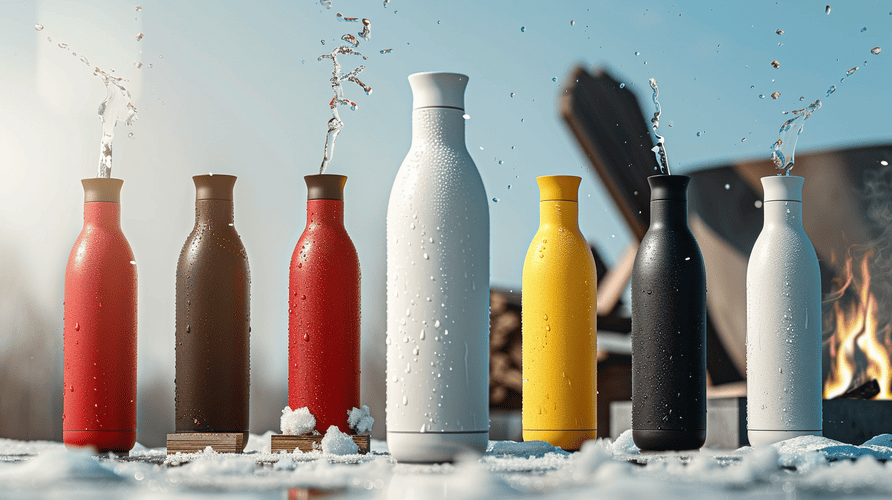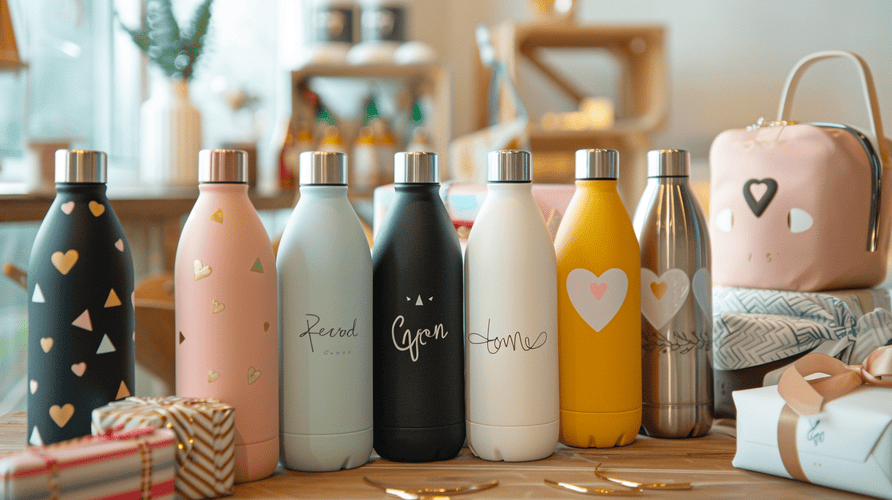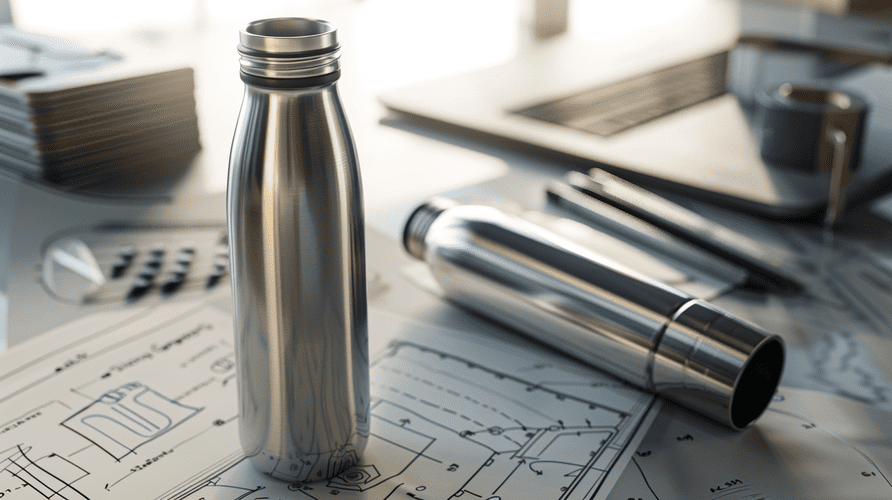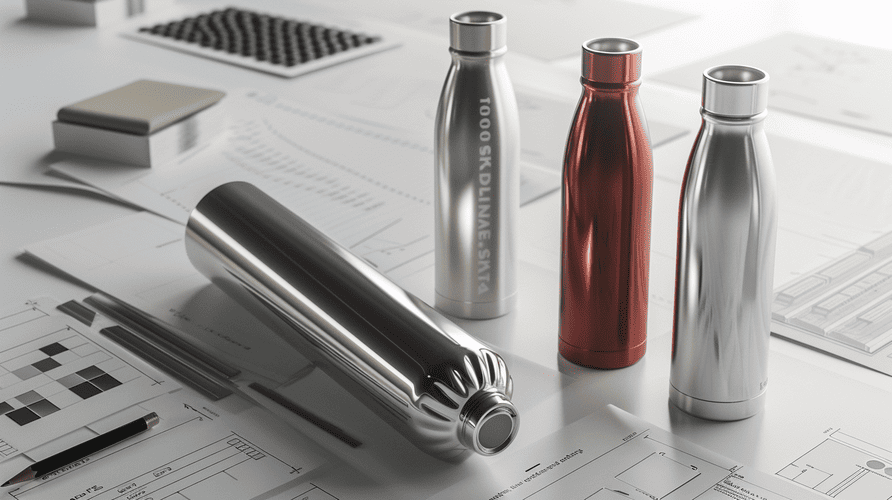Worried about plastic pollution? Your daily choices matter. Opt for reusable bottles and make a real difference for our planet.
Choosing reusable water bottles, especially durable stainless steel ones, significantly reduces single-use plastic waste. This simple switch supports a greener lifestyle and a healthier environment for everyone.

It's a big question, and many of us want to do our part for the planet. You might be wondering where to even begin with so many options out there. Let's look deeper into how your choice of water bottle can truly impact your journey towards sustainability. Making a conscious decision here is easier than you think, and I'm here to guide you through it.
What type of water bottle is truly best for the environment?
Overwhelmed by "eco-friendly" claims? It's hard to know which bottle is genuinely green. Let's find the most sustainable option together.
Stainless steel water bottles1 are often best. They are durable, recyclable, and don't leach chemicals. This makes them a top choice for long-term environmental benefits.

When we talk about the "best" water bottle for the environment, several factors come into play. It’s not just about the material itself. Its lifecycle – from production to disposal – is also very important. As someone who has been in the stainless steel products business for years, like us at Icobottle, I’ve seen firsthand how different materials compare.
Comparing Common Reusable Bottle Materials
It is useful to compare the common materials used for reusable bottles. Each has its pros and cons.
| Material | Pros | Cons | Environmental Impact Notes |
|---|---|---|---|
| Stainless Steel | Extremely durable, long-lasting, highly recyclable, no chemical leaching | Higher initial energy in production compared to plastic | If used for many years, its longevity and recyclability offset the initial impact. From my experience supplying businesses like Mark Shenng's in Canada, companies prefer its robust nature and premium feel for their branding. |
| Glass | Recyclable, no chemical leaching, good taste purity | Heavy, breakable, production can be energy-intensive | Glass is recyclable. But its fragility means it might not last as long as stainless steel. This could lead to more replacements. Shipping weight also adds to its carbon footprint. |
| Reusable Plastic (BPA-free) | Lightweight, often cheaper | Can still leach chemicals over time, less durable, lower recycling rates | While better than single-use plastic, its shorter lifespan and end-of-life issues make it less ideal. Microplastic shedding during washing is also a concern. |
| Aluminum | Lightweight, recyclable | Often lined with plastic resin, can dent easily, mining impact | The plastic liner can defeat the purpose if you're trying to avoid plastics. Recycling is good. But the initial production from bauxite ore is energy-intensive and environmentally damaging. This is a concern for many of my European clients. |
For procurement officers like Mark, who are sensitive to quality and looking for products that can be rebranded and sold at a premium, stainless steel offers that perfect balance. It looks good. It feels good. And it is good for the environment when chosen thoughtfully and used long-term. The key is durability and reusability. A bottle used thousands of times will always beat a single-use alternative. This is true even if it has a slightly higher initial production footprint. It also beats a less durable reusable one that needs frequent replacement.
So, how can manufacturers actually make eco-friendly water bottles?
Curious about green manufacturing? It's complex. Many factors make a bottle truly eco-friendly, beyond just the material.
Manufacturers make eco-friendly bottles by using sustainable materials2 like recycled steel. They minimize energy in production, reduce waste, and ensure ethical labor practices. Designing for durability is key.

Making a water bottle truly "eco-friendly" goes far beyond just picking a green-sounding material. As a supplier from China, we at Icobottle think about this a lot. It’s a whole process. It starts from sourcing raw materials. It ends with the final product landing in a customer's hands, perhaps in America or Europe. For clients like Mark, who are looking for quality and are aware of supply chain issues, understanding this process is valuable. He often worries about certificate fraud, so transparent manufacturing is important.
Key Aspects of Eco-Friendly Bottle Manufacturing
There are several important aspects to making bottles in an eco-friendly way.
-
Material Sourcing:
- Using Recycled Content: Incorporating recycled stainless steel, for example, significantly reduces the energy needed. This is much less than using virgin ore. This lowers the carbon footprint right from the start.
- Sustainable Sourcing: Ensuring that even virgin materials are sourced responsibly. This means minimizing environmental damage during extraction.
-
Production Processes:
- Energy Efficiency: Using renewable energy sources or implementing energy-saving technologies in the factory. This could be anything from modern machinery to better insulation.
- Water Conservation: Minimizing water usage during manufacturing. Also, treating wastewater properly before discharge.
- Waste Reduction: Designing processes to reduce scrap material. Any waste generated should be recycled or disposed of responsibly. We constantly look for ways to optimize cutting and shaping to reduce metal waste in our Icobottle facility.
-
Design for Durability and Longevity:
- A bottle that lasts for years is inherently more eco-friendly. It is better than one that breaks or wears out quickly. This means using high-quality materials (like 18/8 food-grade stainless steel). It also means using robust construction techniques.
- Thinking about repairability or part replacement is an advanced step. It is less common for bottles.
-
Ethical Considerations:
- Fair Labor Practices: Ensuring workers are treated fairly. They must work in safe conditions. This is a crucial part of overall sustainability. It sometimes gets overlooked.
- Transparent Supply Chains: Being able to trace materials and processes helps verify eco-claims. This is important for businesses wanting to assure their own customers. Efficient communication with suppliers is key here, a pain point Mark has experienced.
When Mark searches for suppliers using Google or at trade shows, he's looking for quality inspection and certification. These manufacturing practices are often what those certifications (like ISO 14001 for environmental management) are verifying. It's a commitment to a better way of doing things. It is not just a marketing gimmick.
What specific materials make a water bottle eco-friendly?
Confused by material jargon? "Eco-friendly" can be misleading. Let's clarify what truly sustainable bottle materials are.
Eco-friendly bottles are often made of stainless steel, glass, or plant-based plastics3. The best choices are durable, recyclable, and non-toxic, minimizing environmental harm.

When we talk about what eco-friendly bottles are made of, we're looking for materials that score well on several fronts. These include sustainability of sourcing, durability, safety (non-toxic), and end-of-life options (recyclability or biodegradability). As a manufacturer specializing in stainless steel4 products like hip flasks, water bottles, and coffee mugs for markets like America and Europe, I've seen preferences shift. Customers prefer materials that tick all these boxes.
Breakdown of Common Eco-Friendly Materials
Let's look at some common materials in more detail.
-
Stainless Steel (particularly 18/8 or 304 grade):
- Composition: Primarily iron. It also has chromium and nickel for corrosion resistance and durability.
- Why Eco-Friendly: It's incredibly durable. It can last for many years. This reduces the need for replacements. It's 100% recyclable without loss of quality. It doesn't leach harmful chemicals like BPA or phthalates into your water. This is a key feature for procurement officers like Mark. They prioritize quality and safety for their rebranded products. The main drawback is the energy used in initial production. But this is offset by its longevity and recyclability. Many suppliers, including us at Icobottle, are also exploring options with higher recycled content for our wholesale stainless steel water bottles. We also ensure our payment methods and logistics are smooth to avoid delays.
-
Glass:
- Composition: Made from sand (silica), soda ash, and limestone.
- Why Eco-Friendly: It's inert. This means it doesn't react with the contents or leach chemicals. It’s also endlessly recyclable. However, it's heavier and breakable. This can lead to a shorter usable lifespan if not handled carefully. The energy to produce and transport glass can also be significant.
-
Plant-Based Plastics (Bioplastics like PLA):
- Composition: Derived from renewable resources like corn starch or sugarcane.
- Why Eco-Friendly (Potentially): It reduces reliance on fossil fuels. Some are designed to be biodegradable or compostable under specific industrial composting conditions.
- Challenges: Not all bioplastics are easily compostable at home. Many still end up in landfills. There, they may not break down as intended. "Biodegradable" can be a confusing term for consumers. Also, the agricultural land used to grow the raw materials has its own environmental impact. This option is less common for the premium feel Mark's company targets.
-
Recycled Materials:
- This isn't a material type itself. It is a characteristic. Bottles made from recycled stainless steel, recycled glass, or even recycled plastics (like rPET) are generally more eco-friendly. They divert waste from landfills. They also reduce the need for virgin resources. For example, using recycled aluminum requires up to 95% less energy than producing new aluminum.
For B2B clients focusing on wholesale, the choice often comes down to a balance. This includes eco-credentials, durability for branding, perceived value, and competitive pricing. Stainless steel, especially with customized logos and colors, hits a sweet spot. It communicates quality and sustainability effectively. This is vital for brands like Mark's, distributing at a premium in Canada after sourcing from countries like China or Vietnam.
Conclusion
Choose durable, reusable bottles like stainless steel. This simple act reduces waste, promotes sustainability, and supports a greener lifestyle for us all.
-
Explore the advantages of stainless steel water bottles, including their durability and recyclability, to make an informed choice for the environment. ↩
-
Explore this link to discover various sustainable materials that can significantly reduce the environmental impact of water bottle production. ↩
-
Learn about the potential benefits and challenges of plant-based plastics, a sustainable alternative for eco-friendly bottles. ↩
-
Explore the advantages of stainless steel, including durability and recyclability, making it a top choice for eco-friendly bottles. ↩

